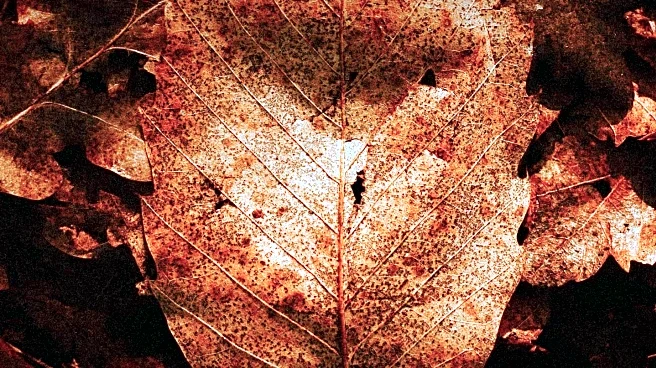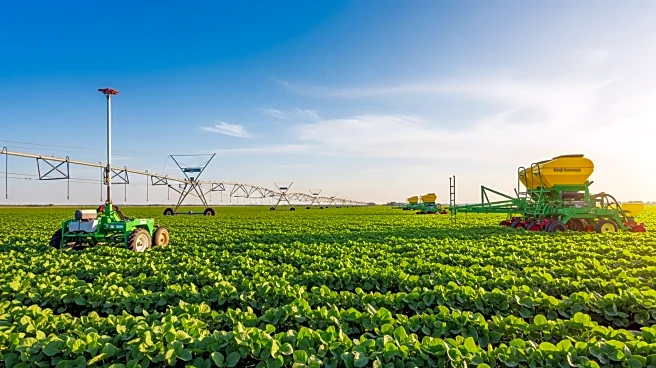What's Happening?
As autumn progresses, fallen leaves become a common sight across urban landscapes, prompting many to engage in the annual ritual of raking and disposing of them. However, environmental experts are advocating
for a change in this practice, highlighting the ecological benefits of leaving leaves where they fall. According to the Xerces Society for Invertebrate Conservation, fallen leaves provide essential overwintering habitats for various wildlife, including toads, turtles, birds, and pollinators. Notably, seventy percent of the nearly 4,000 native bee species in North America rely on leaf cover for nesting and insulation during winter. Additionally, the Environmental Protection Agency reports that leaves and yard debris contribute significantly to U.S. solid waste, accounting for over 12 percent annually. This waste, when improperly decomposed, releases methane, a potent greenhouse gas. Experts suggest that leaving leaves can also serve as natural mulch and fertilizer, enriching soil and preventing weed growth.
Why It's Important?
The practice of leaving fallen leaves undisturbed has broader implications for environmental conservation and waste management. By providing habitats for wildlife, particularly pollinators like bees, this approach supports biodiversity and helps combat the decline of species such as native bumblebees, which are facing extinction. Furthermore, reducing leaf disposal can significantly decrease the volume of solid waste, mitigating methane emissions and reducing the carbon footprint associated with gas-powered yard equipment. This shift in practice not only benefits the environment but also offers financial savings and reduces labor for homeowners, allowing more time to enjoy the seasonal beauty.
What's Next?
If more individuals adopt the practice of leaving leaves, it could lead to a cultural shift in how communities manage yard waste. Local governments and environmental organizations may begin to promote this practice through educational campaigns, emphasizing its ecological benefits. Additionally, there could be increased interest in developing sustainable landscaping practices that incorporate natural elements like fallen leaves. As awareness grows, stakeholders such as homeowners, environmental groups, and policymakers may collaborate to create guidelines and incentives for sustainable yard management.
Beyond the Headlines
Leaving leaves undisturbed touches on deeper environmental ethics, encouraging a harmonious relationship with nature. It challenges conventional landscaping norms and promotes a more sustainable approach to urban living. This practice could inspire broader discussions on ecological responsibility and the importance of preserving natural habitats within urban settings. As society becomes more environmentally conscious, such practices may become integral to community planning and conservation efforts.











